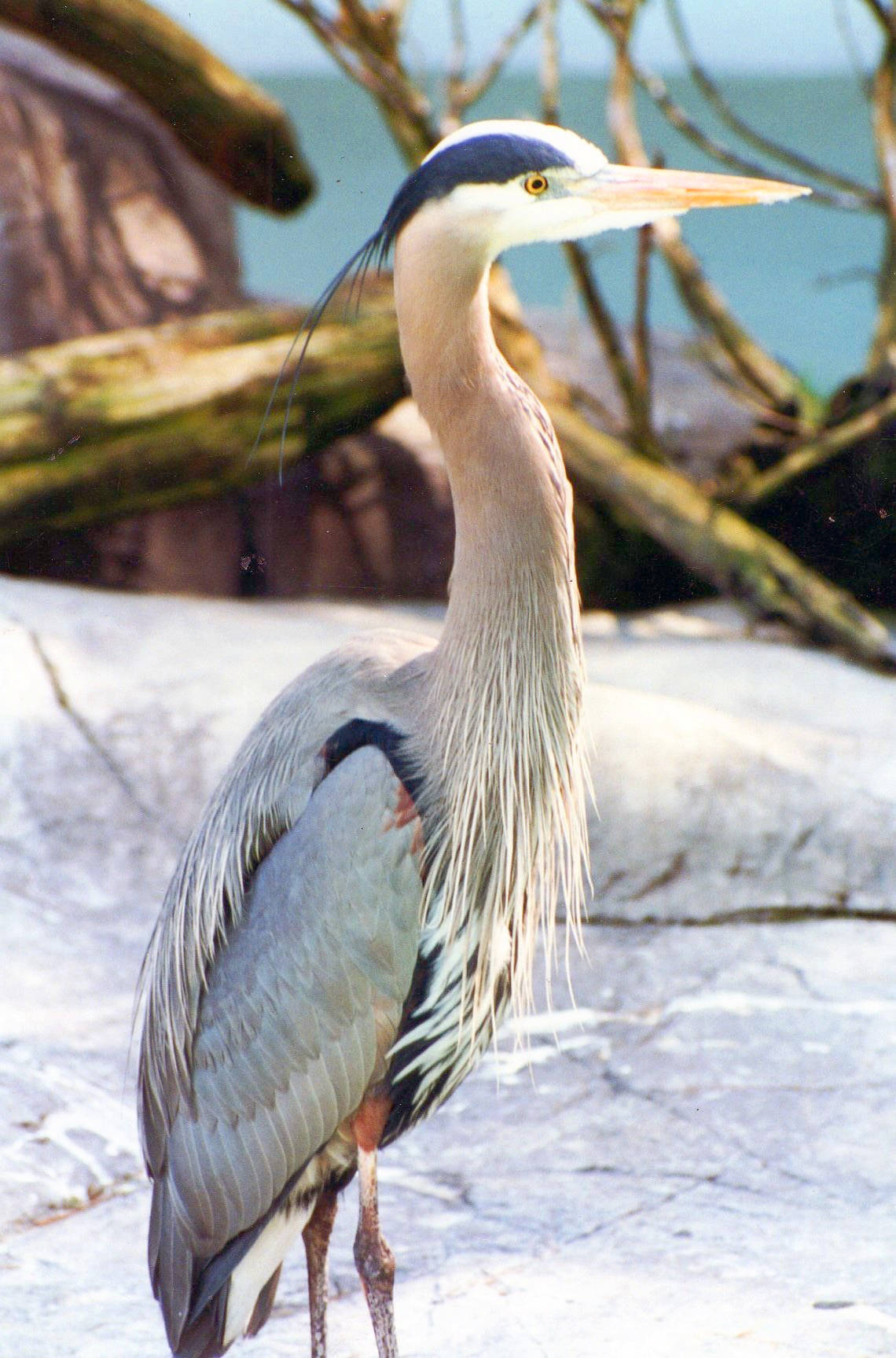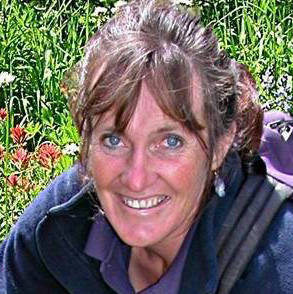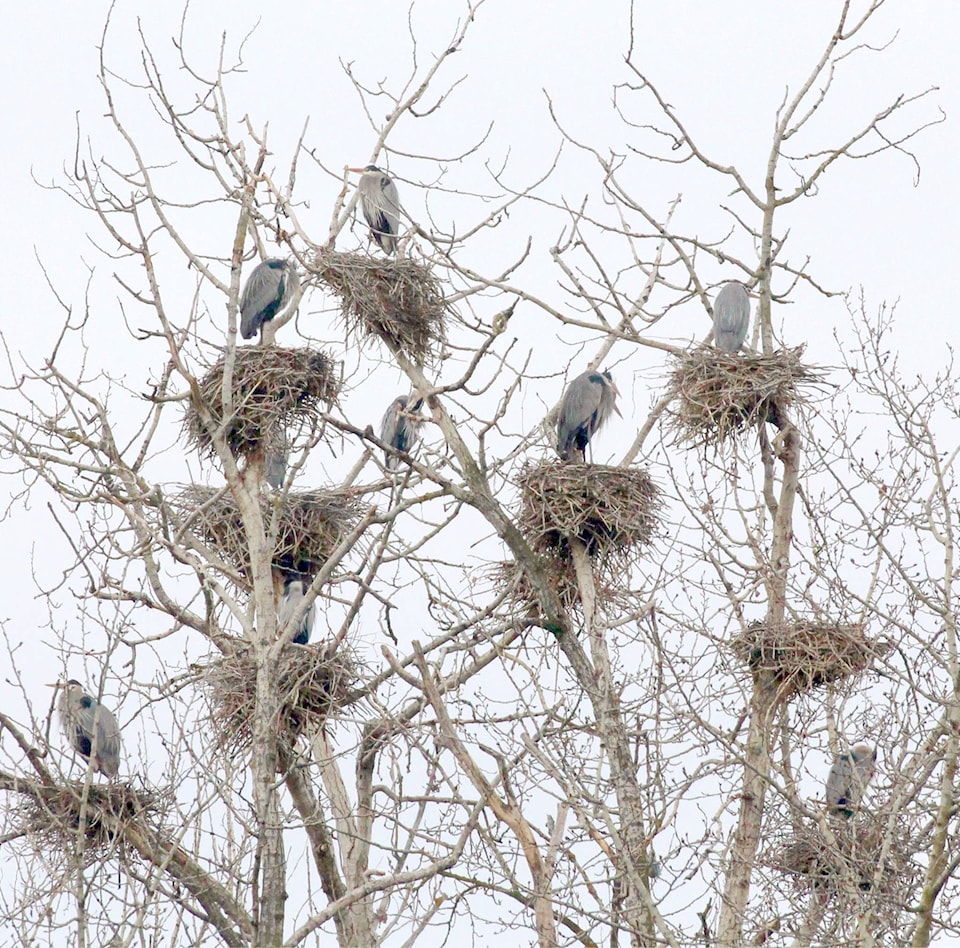Roseanne Van Ee/Contributor
Have you seen the tall, gorgeous Great Blue Herons (four-feet tall with a six-foot wingspan) courting and nesting high up in the old cottonwood trees on 24th St. across from the Big Box Outlet?
Up to 80 of these long bill, long neck and long-legged shorebirds may return to their nests over the next few weeks after wintering at Swan, Otter, Duck, Wood and Echo Lakes. Take binoculars. They put on quite the show. Kids enjoy watching this too.
Flowers are sexy! That’s it. That’s all they really are – the temporary seed-bearing part of a tree, shrub, herbaceous (soft-stemmed) plant or grass with reproductive organs (pistils and stamens) often surrounded by brightly coloured petals. Flowers want insects and birds to cross-fertilize them with pollen from other flowers of the same species.
Get Outdoors!: Snow sculptures and strange encounters
Get Outdoors!: Strange encounters Part 2
They put out an invitation in the form of sweet nectar, edible pollen, a nice smell, or an attractive colour. Male and female parts are right out in the open, about half a bug length apart so the attracted insects will bump into them. Many insects are fairly clumsy – watch bumblebees crash land into flowers. Slightly sticky pollen clings to their legs and body. Other tricks include tripping options that smack down on arriving insects to shower them with pollen or put nectar deep down in a floral throat for pollination by sugar-loving, long-tongued butterflies and hummingbirds.
Pollen is fine, powdery, usually yellow, microscopic granules produced on the anther on the flower’s male stamen. The pollen is carried by wind, insects or animals to the female stigma on the pistil of another flower. This is cross-pollination. Seeds develop from this fertilization. Seeds are embryonic plants enclosed in a protective outer coating. We often call them stones, pits, nuts, kernels, grain or germ. They’re enclosed in pods, fruit, shells or cones.
Never move or relocate a blooming or fruiting plant – it has shifted from vegetative to reproductive growth. Mark the plant and return early next spring to deal with it.
Flowers are amazingly diverse. We often recognize plants by their flowers. Some wildflowers have only one flower per stem, like wild roses and Tiger Lilies. Whereas Cattails have thousands of minuscule flowers on a stem that later produce seeds attached to fluffy parachutes. Cattails have separate unisexual flowers. The densely packed female flowers form the brown sausage-like shape with the male flowers on the narrow spike above. Tiny floating duckweed occasionally produces minute microscopic flowers.
Swedish botanist Carl Linnaeus invented plant classification based largely on the nature of reproduction and structure of flowers. He also noticed that plants opened their flowers at different times of the day with impressive reliability. Most flowers open with the sun often releasing scent and close at night. But some flowers, like the Evening Primrose, open at dusk and give off a scent to attract moths for pollination. The colour yellow is typical of “nocturnal” plants as it’s still relatively visible in the dark.
Because of the Okanagan’s topography and microclimates, we get a variety of wildflower shows. Starting in the valley bottom with an early, warm spring in March until June, then gradually ascending uphill to the extravagant subalpine mountain slope shows from July to September.
Get to know our native wildflowers (those that evolved here) but don’t pick them! Keep native wildflowers for the wild bees, butterflies and birds to enjoy for their nourishment and to pollinate so the plants can reseed or nourish their bulbs.
Also for others to enjoy their splendid shows. The Lone Pine field guide - Plants of Southern Interior British Columbia – is excellent. Enjoy!
Roseanne enthusiastically shares her knowledge of the outdoors to help readers experience and enjoy nature. Discover exciting and adventurous natural events, best trails, and wild places. Follow her on Facebook for more.
@VernonNews
newstips@vernonmorningstar.com
Like us on Facebook and follow us on Twitter.


